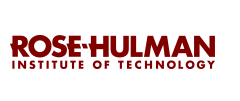Title
Manipulation of Surface Plasmon Resonance in Metal and Alloy Thin Films Using Dielectric Media
Date of Award
Spring 5-2016
Document Type
Thesis
Department
Department of Physics and Optical Engineering
First Advisor
Azad Siahmakoun
Second Advisor
Maarij Syed
Third Advisor
Daniel Morris
Abstract
Surface plasmon polaritons are coherent electron oscillations that propagate along an interface between a Drude metal and a dielectric medium. The excitation of polaritons is highly dependent on the dielectric properties of the metal, the thickness of the metal, and the optical properties of the dielectric material. First, plasmonic activity is assessed for several thicknesses of silver and nickel chromium under He-Ne incidence. Relationships between film thickness and metal dielectric function are explored in both cases. To manipulate the plasmonic activity at the silver surfaces, two methods are explored. Silver oxide was grown on the surface of the silver films, and the resulting reflection curves are compared to the curves of the metal silver film alone. Next, a polymer was added to the top of the silver films, and the reflection curves were compared. Poling of the polymer is also discussed and attempted as a means of dynamically modulating the reflection curves. A weak relationship between the dielectric function of silver and the plasmonic activity was found. No definite relationship between the dielectric function of nickel chromium and plasmonic activity was found. Both dielectric media studied were found to alter the plasmonic activity at the metal-dielectric interface.
Recommended Citation
Hall, Benjamin DuBray, "Manipulation of Surface Plasmon Resonance in Metal and Alloy Thin Films Using Dielectric Media" (2016). Graduate Theses - Physics and Optical Engineering. 12.
https://scholar.rose-hulman.edu/optics_grad_theses/12
Included in
Metallurgy Commons, Other Engineering Commons, Other Materials Science and Engineering Commons, Semiconductor and Optical Materials Commons


Comments
I dedicate this thesis to my parents, whose love and support have made it possible.
ACKNOWLEDGEMENTS Dr. Azad Siahmakoun, thank you for accepting me as your student (twice), for guiding me through my studies, and for your encouragement. I am privileged to call you a mentor. Dr. Maarij Syed, thank you for serving on my advisory committee, for your academic counsel, and for the years of guidance throughout my undergraduate and graduate education. Dr. Daniel Morris, thank you for serving on my advisory committee on short notice, for your help with my research, and for your corrections to my thesis. Mr. Brian Fair, thank you for the long hours in the clean room and for your expertise along the way. Your positive demeanor always made the time pass quickly. Mr. Roger Sladek, thank you for all of the machining work you have done for my thesis and for your technical advice over the years. Mr. Ben Webster, thank you for your help and for your generosity with equipment. Dr. Michael McInerney, thank you for giving me a home when I had none. Dr. Michael Moloney, thank you for motivating me to finish and for your advice. Heesoo Park, thank you for leading by example through your diligence and character. Tahereh Naderishahab, thank you for your kindness, generosity, and friendship. Sanaz Faryadras, thank you for your love. I would not have finished without you. I would like to give special thanks to my parents and sister for a lifetime of unconditional love. And to my late grandmother, thank you for everything. I’m sorry I didn’t finish sooner.